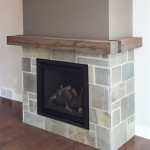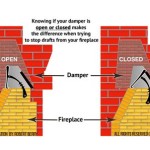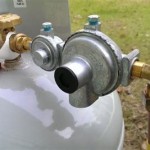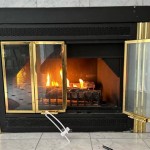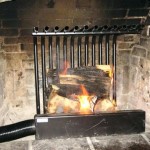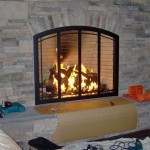Best Energy-Efficient Electric Fireplace Inserts
Electric fireplace inserts offer a convenient and aesthetically pleasing alternative to traditional wood-burning or gas fireplaces. They provide supplemental heating, ambiance, and a focal point for a room without the complexities of chimney maintenance, fuel storage, or potential safety hazards related to combustion. A crucial consideration for prospective buyers is energy efficiency. Selecting an energy-efficient model can minimize electricity consumption, lowering utility bills and reducing environmental impact. This article examines key features, technologies, and models that contribute to the energy efficiency of electric fireplace inserts.
Understanding Energy Efficiency in Electric Fireplace Inserts
The energy efficiency of an electric fireplace insert is primarily determined by how effectively it converts electricity into heat and distributes that heat into the room. Several factors influence this efficiency, including the heating element technology, thermostat controls, insulation, and supplementary features designed to conserve energy.
The primary function of an electric fireplace insert is to generate heat. The most common heating technologies used are resistive heating coils and infrared heating. Resistive heating coils operate by passing an electric current through a metal coil, which then heats up and radiates heat into the surrounding area. Infrared heating uses infrared lamps to directly heat objects and people within the room, similar to how sunlight warms the environment. Infrared heating is generally considered more energy-efficient as it focuses heat directly where it is needed, rather than warming the air first.
Thermostat controls play a significant role in managing energy consumption. Programmable thermostats allow users to set specific heating schedules, ensuring the fireplace only operates when needed. Some models also incorporate features like automatic shut-off timers and temperature sensors, further optimizing energy usage. Precise temperature control prevents overheating and unnecessary power draw.
Insulation around the heating element and within the fireplace insert itself is crucial for minimizing heat loss. Proper insulation ensures that the heat generated is directed into the room, rather than escaping into the surrounding structure. Better insulated models will maintain room temperature with less energy consumption.
Supplemental features, such as adjustable flame effects and low-wattage operation modes, also contribute to overall energy efficiency. Many electric fireplaces offer adjustable flame brightness and speed, allowing users to create a desired ambiance without maximizing heat output. Low-wattage modes enable users to maintain a comfortable temperature in a smaller area without consuming excessive electricity. Some inserts now come equipped with zone heating capabilities allowing for a specified portion of the room to be targeted.
Key Features Contributing to Energy Efficiency
Beyond the general principles, specific design elements and features inherent in some electric fireplace inserts directly contribute to their energy efficiency. These features often involve advanced technology and thoughtful engineering.
Adaptive Start technology is a feature found in some higher-end models. This technology allows the fireplace to learn the heating characteristics of a room and preheat the area before the programmed start time. By anticipating the heating needs of the room, the fireplace can operate more efficiently and avoid energy waste.
Zone heating capabilities allow the user to direct heat to a specific area of the room. Rather than uniformly heating the entire space, zone heating allows the fireplace to target a user-defined area. This targeted approach can significantly reduce energy consumption, particularly in larger rooms.
LED lighting for the flame effects is significantly more energy-efficient than traditional incandescent or halogen bulbs. LED lights consume a fraction of the energy while providing comparable or superior brightness and longevity. The use of LEDs not only reduces energy consumption but also extends the lifespan of the lighting components.
Variable fan speed control allows users to adjust the speed of the fan that circulates heat into the room. Lower fan speeds consume less energy while still providing adequate heat distribution. The ability to fine-tune fan speed allows users to optimize energy efficiency based on their specific needs and preferences.
Smart home integration allows users to control the fireplace remotely via a smartphone app or voice commands. This integration enables users to adjust settings, set schedules, and monitor energy consumption from anywhere with an internet connection. Smart home integration provides greater convenience and control over energy usage.
Some models offer a "flame-only" mode, where the flame effect operates without any heat output. This mode allows users to enjoy the visual appeal of the fireplace without consuming any electricity for heating. "Flame-only" mode is ideal for use during warmer months when heat is not needed.
Modern electric fireplaces are designed for easy installation and maintenance. Proper installation ensures optimal performance and energy efficiency. Regular cleaning and maintenance, such as removing dust and debris from the heating element and fan, can also help to maintain efficiency over time.
Evaluating Energy Efficiency: Model Comparisons and Considerations
When selecting an energy-efficient electric fireplace insert, it is essential to compare different models and consider their specific features and specifications. Factors such as wattage, heating capacity, and energy-saving certifications should be taken into account.
Wattage is a direct indicator of the fireplace's energy consumption. Lower wattage models generally consume less electricity, but they may also have a lower heating capacity. It is important to choose a wattage that is appropriate for the size of the room being heated.
Heating capacity, measured in BTU (British Thermal Units), indicates the amount of heat the fireplace can generate. A higher BTU rating signifies a greater heating capacity, which is necessary for larger rooms. However, a higher BTU rating also implies higher energy consumption.
Energy-saving certifications, such as ENERGY STAR, can provide assurance of energy efficiency. Look for models that have been certified by reputable organizations to meet specific energy-saving standards. These certifications indicate that the fireplace has been independently tested and verified to meet certain efficiency criteria.
When evaluating different models, consider the long-term operating costs. While a more energy-efficient model may have a higher initial cost, its lower energy consumption can result in significant savings over time. Calculate the estimated annual operating costs based on the fireplace's wattage, heating capacity, and the local electricity rates.
Customer reviews and ratings can provide valuable insights into the real-world performance and energy efficiency of different electric fireplace inserts. Pay attention to reviews that mention electricity consumption, heating effectiveness, and ease of use. Many online retailers provide customer feedback sections where potential buyers can research these facets of specific models.
It is also important to consider the overall design and aesthetics of the fireplace insert. Choose a model that complements the existing décor of the room and provides the desired visual appeal. The fireplace should not only be energy-efficient but also aesthetically pleasing.
The size and type of room being heated should also be considered. A smaller room will require a lower BTU rating and wattage than a larger room. Also, consider the insulation and construction of the room. A poorly insulated room will require a more powerful fireplace to maintain a comfortable temperature, which can increase energy consumption.
Finally, consider the manufacturer's warranty and customer support. A reputable manufacturer will offer a warranty that covers defects in materials and workmanship. Good customer support can provide assistance with installation, operation, and troubleshooting.

ᑕ❶ᑐ Energy Efficient Electric Fireplaces For Your Home

Electric Fireplace Inserts Best Fire Hearth Patio

Modern Flames Redstone 36 Electric Fireplace Insert Rs 3626 Us

Modern Flames Redstone 30 Inch Built In Electric Fireplace Insert Firebox Heater Rs 3021 Fireplaces Depot

Modern Flames Redstone 30 Electric Fireplace Insert Rs 3021 Us

Dynasty Fireplaces 32 In Led Electric Fireplace Insert Black Matt Ef44d Fgf The Home Depot

The Best Electric Fireplace Inserts To Stay Cozy This Winter

Electric Fireplace Insert 28 Inch Top Rated Magikflame

5 Best Electric Fireplace Inserts According To Reviews Modern Blaze

9 Best Electric Fireplace Inserts Of 2024 Tested And Reviewed
Related Posts

